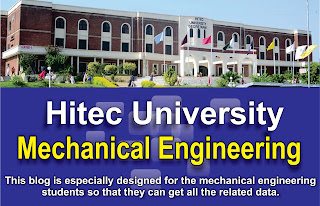Showing posts with label types of steam engine. Show all posts
Steam Engine
By : Asad Ali ArshadSteam Engine
A steam engine is a heat engine that performs mechanical work using steam as its working fluid. Steam engine is external combustion engine in which the working fluid is separated from the combustion chambers. The ideal thermodynamics cycle used to analyze this process is called the Rankine Cycle. In this cycle water is heated and changes into steam in a boiler operating at a high pressure. When expanded using pistons or turbines mechanical work is done. The reduced pressure steam is then exhausted to the atmosphere, or condensed and pumped back into the boiler. The main parts of steam engine are Boiler, Motor Unit, Cold Sink, Water pump.
Rankine Cycle:
The Rankine cycle is the fundamental operating cycle of all power plants. The Rankine cycle operates in the following steps.
· 1-2-3 Isobaric Heat Addition.
High pressure liquid enters the boiler from the feed pump and is heated to the saturation temperature. Further addition of energy causes evaporation of the liquid until it is fully converted to saturated steam.
· 3-4 Isentropic Expansion:
The vapor is expanded in the turbine, thus producing work which may be converted to electricity. In practice the expansion is limited by the temperature of the cooling medium and by the erosion of the turbine blades.
· 4-5 Isobaric Heat Rejection:
The vapor liquid mixture leaving the turbine is condensed at low pressure, usually in a surface condenser using cooling water. In well designed and maintained condenser, the pressure of the vapour is well below atmospheric pressure, approaching the saturation pressure of the operating fluid at the cooling water temperature.
· 5-1 Isentropic Compression:
The pressure of the condensate is raised in the feed pump. Because of the low specific volume of liquid, the pump work is relatively small and often neglected in thermodynamics calculations.
Types of Steam Engine
According to the number of working stroke
- · Single acting steam engine
- · Double acting steam engine
According to the number of cylinder
- · Simple steam engine
- · Compound steam engine.
According to the types of exhaust
- · Conducing steam engine
- · Non-conducing steam engine.
According to the speed of crankshaft
- · Slow, medium and high speed engine.
According to the field of application
- · Stationary Engine.
- · Local motive engine.
- Marine Engine.
Limitation of Steam Engine
The major limitations of a steam engine or external combustion engine are given below.
· A steam engine is huge and heavy. Due to its big boiler and furnace a steam is huge, heavy and clumsy. Since the boiler of a steam engine is very heavy, therefore a steam engine cannot be used for running small vehicles like cars and buses.
· A steam engine is unsafe to use. A steam engine is not very safe to use because its boiler can burst to excessive steam pressure,
· A steam engine does not start at once. Before a steam engine can start, we have to build a coal fire to get steam. This process takes a long time and hence a steam engine cannot be started at a moment’s notice.
· A steam engine has low efficiency.
Hitec Mechanical Engineering
Mechanical Engineeirng Hitec Mechanical Engineering As we know Mechanical Engineering is the branch of engineering dealing with the des...










